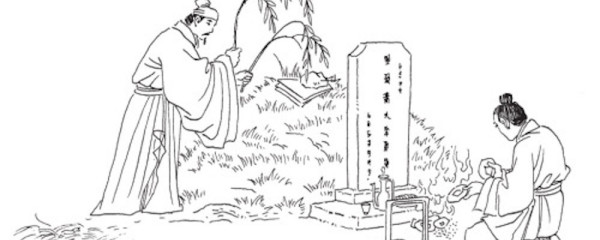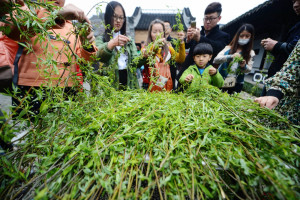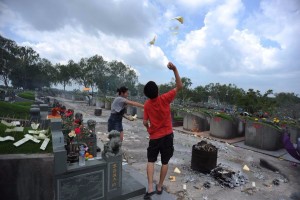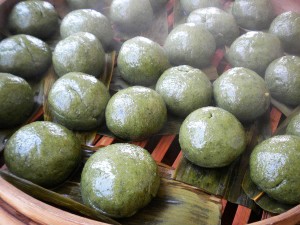06
Apr 2016
TOMB SWEEPING FESTIVAL
Hello guys! It’s good to be back!! Here in China, we just had a holiday and the holiday is very unique. It is called “Tomb Sweeping Festival”. What kind of festival is that? Let’s find out the details here 
Ancestors’ Day
There is a saying in Chinese Proverbs that says, “To forget one’s ancestors is to be a brook without a source, a tree without a root.” For Chinese people and most of Asian countries, it is extremely important to have a piety attitude towards parents and their ancestors.
Tomb Sweeping Festival or 清明节 (read qing ming jie or Qingming Festival) is a traditional Chinese festival for Chinese people to go and sweep tombs and commemorate their ancestors. On this day, tomb sweeping is one of the most important and popular activities to show respect to ancestors.
Lucky for us, foreigners  Every year, the Tomb Sweeping Festival takes place at the beginning of the spring which is April 4 or 5 (according to the Lunar calendar) and it gives us 3 days to rest.
Every year, the Tomb Sweeping Festival takes place at the beginning of the spring which is April 4 or 5 (according to the Lunar calendar) and it gives us 3 days to rest.
What do Chinese people do during the Tomb Sweeping Festival?
1. Tomb Sweeping
Of course, it’s the idea of the festival! People show respect to their ancestors by visiting their graves, and offering food, tea, wine, incense, joss paper (representing money), etc. They sweep the tombs, removing weeds, and adding fresh soil to the graves, stick willow branches on the tomb, and burn incense and ‘paper money’. They pray before their ancestors’ graves and beseech them to bless their families. However, the custom has been greatly simplified today, especially in cities, where only flowers are presented to the dead relatives.
2. Willow Branches on the Gates
People wear soft willow branches and place the branches on gates and front doors. People believe that this custom will ward off wandering evil spirits during Qingming. That willows are considered magical is mainly a Buddhist influence. Traditional pictures of the Goddess of Mercy “Guanyin” often show her seated on a rock with a willow branch in a vase of water at her side. The goddess used this mysterious water and branch to scare away demons. According to historical records there is an old saying, “Put willow branches up on gates; drive ghosts away from houses.”
3. Kite Flying
Flying kites is also an important custom enjoyed by many people, young and old, during the Qingming Festival. The uniqueness of kite flying during the Qingming Festival lies in that kites are not only flown during the day but also in the evening. Little colored lanterns are tied to the kites or to the strings that hold the kites. When kites fly in the evening, the lanterns look like twinkling stars. In the past, people cut the string to let the kite fly freely. People believe that this custom can bring good luck and eliminate diseases.
4. Eating Green Rice Balls
This is a very special dish of the festival which is made of a mixture of glutinous rice powder and green vegetable juice, and stuffed with sweetened bean paste.
Qingming Festival Outside China
Cengbeng at Pangkalpinang, Indonesia
Qingming Festival is not only rousing in China. This festival is widely popular in Southeast Asian countries like Singapore, Malaysia and Indonesia. These countries have a big population of Chinese ancestry, that even though there’s no big holiday like in China, people will go to their hometown to celebrate the festival. For example, like in my country, Indonesia, as we are an archipelago country, people need to use airplane to reach other places. During Qingming or Cengbeng (Chinese dialect pronunciation from Fujian province) festival, the airplane tickets will be expensive, can be two to threefold from the usual.
“To understand your parents’ love, you must raise children yourself – Chinese Proverbs”
Related articles:
Chinese New Year: Year of Monkey
Chinese Mid Autumn Festival
11.11 Euphoria





































